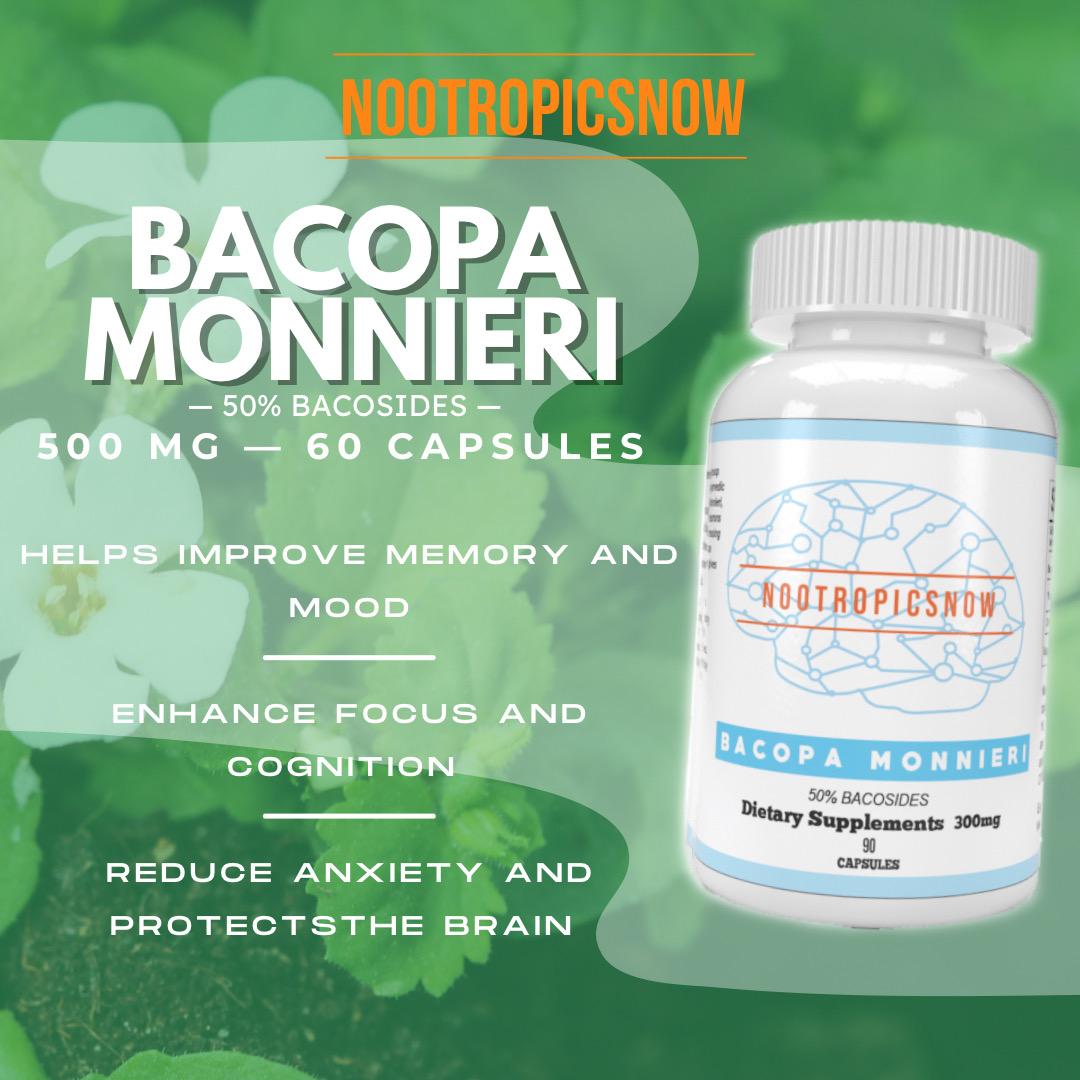Strattera Dosages: Finding the Right Dose

`markdown
Strattera Dosages: A Comprehensive Guide (Updated for 2024)

Strattera (atomoxetine) is a non-stimulant medication primarily prescribed for the treatment of Attention-Deficit/Hyperactivity Disorder (ADHD). Unlike stimulant medications, Strattera affects norepinephrine reuptake, leading to improved focus and reduced impulsivity without the same potential for abuse. Understanding the correct Strattera dosages is critical for achieving optimal therapeutic outcomes. This guide provides a detailed overview of Strattera dosages for adults, adolescents, and children, alongside important considerations for dose adjustments and potential side effects.
Understanding Strattera’s Mechanism of Action
Firstly, it is important to understand how Strattera differs from stimulant medications. Strattera is a selective norepinephrine reuptake inhibitor (SNRI). That is to say, it increases the amount of norepinephrine, a neurotransmitter, available in the brain. Secondly, Norepinephrine plays a crucial role in attention, impulse control, and activity levels. Consequently, Strattera helps individuals with ADHD regulate their focus and behavior by enhancing norepinephrine activity. Unlike stimulants, which affect dopamine levels more directly, Strattera has a lower risk of dependence. Furthermore, it offers a valuable alternative for those who cannot tolerate stimulants or prefer a non-stimulant approach.

View Product
Initial Strattera Dosages for Adults
The appropriate Strattera dosage for adults is dependent on individual factors. These include weight, other medications being taken, and overall health. Generally, the recommended starting dose of Strattera for adults is 40 mg per day. Therefore, this initial dose is typically taken as a single dose in the morning. Subsequently, this allows for consistent medication levels throughout the day. This also helps minimize sleep disturbances.
After a minimum of three days on the initial dose, the dosage may be increased. The increased dosage is 80 mg per day. This can be administered as a single daily dose or split into two doses. To illustrate, one dose can be in the morning and the other in the late afternoon or early evening. This split dosing may help some individuals manage side effects or improve effectiveness.
Maximum Strattera Dosages for Adults
If the 80 mg daily dose does not achieve sufficient symptom control after two to four weeks, the dosage may be further increased. The dosage can be increased to the maximum recommended dose of 100 mg per day. This maximum dosage should not be exceeded. It is important to note that some individuals may experience significant benefits at lower doses. Ultimately, the goal is to find the lowest effective dose that manages ADHD symptoms with minimal side effects.
Strattera Dosages for Children and Adolescents
Strattera dosage guidelines for children and adolescents differ from those for adults. Dosage is determined by weight.
Children and Adolescents Weighing Up to 70 kg
Children and Adolescents Weighing Over 70 kg
For children and adolescents weighing more than 70 kg, the dosage recommendations are the same as for adults:
Important Dosage Adjustment Considerations
Several factors can influence Strattera dosage requirements. Because of this, individual adjustments may be necessary to achieve optimal therapeutic effects while minimizing potential side effects.
Hepatic Impairment
Patients with hepatic impairment (liver problems) may require significant dosage adjustments. Hepatic impairment affects how the body metabolizes Strattera, leading to increased drug levels in the bloodstream.
CYP2D6 Inhibitors and Poor Metabolizers
Strattera is primarily metabolized by the CYP2D6 enzyme in the liver. Strong CYP2D6 inhibitors can significantly increase Strattera levels in the blood. Poor metabolizers of CYP2D6 also experience higher Strattera concentrations. Because of this, dosage adjustments are essential for these individuals. Common CYP2D6 inhibitors include paroxetine, fluoxetine, and quinidine.
Titration and Dose Adjustment Strategy
Titration refers to the process of gradually adjusting the dosage of a medication. This is done to achieve the desired therapeutic effect while minimizing side effects. When initiating Strattera, it is crucial to follow a gradual titration schedule. Subsequently, regular monitoring of symptoms and side effects is essential.
Managing Potential Side Effects
Strattera, like all medications, can cause side effects. Therefore, it’s important to be aware of these potential effects and how to manage them effectively. Common side effects include:
In rare cases, Strattera can cause more serious side effects. Seek immediate medical attention if you experience:
Long-Term Considerations
Strattera is often used as a long-term treatment for ADHD. Because of this, regular monitoring and follow-up appointments with a healthcare provider are essential. These appointments can assess the medication’s effectiveness and monitor for any potential long-term side effects.
Strattera and Pregnancy/Breastfeeding
The safety of Strattera during pregnancy and breastfeeding is not fully established. Therefore, it should be used with caution in pregnant women and nursing mothers. Discuss the potential risks and benefits with a healthcare provider. This discussion is necessary before starting or continuing Strattera during pregnancy or while breastfeeding.
Drug Interactions
Strattera can interact with several medications. Before starting Strattera, inform your healthcare provider about all other medications, supplements, and herbal products you are taking. Important interactions include:
Strattera Overdose
Strattera overdose can result in various symptoms. These symptoms include drowsiness, agitation, dizziness, and changes in heart rate and blood pressure. If an overdose is suspected, seek immediate medical attention. Contact the Poison Control Center or go to the nearest emergency room.
Strattera Availability and Cost
Strattera is available by prescription only. Its cost can vary depending on insurance coverage, pharmacy, and dosage. Consider generic alternatives to reduce costs. Patient assistance programs may be available for those who qualify.
Conclusion: Tailoring Strattera Dosage for Optimal Results
Finding the right Strattera dosage requires careful consideration of individual factors. Because of this, consult your healthcare provider before starting or changing the dosage of this medication. By working closely with a healthcare professional, individuals with ADHD can safely and effectively manage their symptoms and improve their quality of life.

View Product
`
`markdown
Strattera Dosages: A Comprehensive Guide
Strattera, also known generically as atomoxetine, is a non-stimulant medication primarily prescribed for the treatment of Attention Deficit Hyperactivity Disorder (ADHD). Consequently, understanding the nuances of Strattera dosages is critical for both patients and healthcare professionals alike. In contrast to stimulant medications like Adderall or Ritalin, Strattera works by selectively inhibiting the reuptake of norepinephrine, a neurotransmitter in the brain. As a result, this mechanism leads to improved focus, attention, and impulse control. Determining the correct dosage is paramount, ensuring optimal therapeutic effects while minimizing potential side effects. The information provided here offers a comprehensive guide to Strattera dosages, covering pediatric and adult populations, along with considerations for specific circumstances.
Understanding the Importance of Accurate Dosage
Administering the correct dosage of Strattera is essential for effective ADHD management. A dosage that is too low may not provide sufficient relief from ADHD symptoms, leaving individuals struggling with inattention, hyperactivity, and impulsivity. Conversely, a dosage that is too high can increase the risk of adverse effects, such as nausea, dry mouth, insomnia, and, in rare cases, more serious cardiovascular complications. Therefore, a healthcare professional must carefully evaluate each patient’s individual needs, taking into account factors like age, weight, liver function, and concomitant medications, to determine the most appropriate starting dosage and titration schedule. The ultimate goal is to find the lowest effective dose that provides the greatest benefit with minimal side effects.
Initial Dosage Recommendations for Adults
For adult patients initiating Strattera treatment, the generally recommended starting dosage is 40 mg per day. Typically, this initial dose is taken once daily, preferably in the morning. This administration schedule helps to align the medication’s effects with the individual’s daily routine. Taking it in the morning can also help to avoid potential sleep disturbances. After a minimum of three days on this initial dosage, the prescribing physician will typically reassess the patient’s response and tolerability. If the 40 mg dosage is well-tolerated but not providing adequate symptom control, the dosage may be increased. Subsequently, the dosage is often increased to the target dosage of 80 mg per day.
Titration to Target Dosage
The titration process to reach the target dosage of 80 mg per day involves careful monitoring for both efficacy and side effects. Patients should maintain close communication with their healthcare provider during this phase to report any changes in their symptoms or any adverse reactions they may experience. The 80 mg daily dosage can be administered either as a single dose in the morning or divided into two smaller doses taken throughout the day, generally one in the morning and one in the late afternoon or early evening. Dividing the dosage can help to maintain a more consistent level of medication in the bloodstream, potentially reducing fluctuations in symptom control. Moreover, dividing the dose can help minimize side effects for some patients. However, adherence to the prescribed dosing schedule is important, as missed doses can negatively impact the medication’s effectiveness.
Maximum Dosage Considerations for Adults
In cases where the 80 mg daily dosage does not provide adequate symptom control after a reasonable trial period (typically 2-4 weeks), the healthcare provider may consider further increasing the dosage. The maximum recommended daily dosage for adult patients is 100 mg. It’s important to emphasize that this maximum dosage should only be considered after careful evaluation and discussion between the patient and physician. The decision to increase to the maximum dosage should be based on a thorough assessment of the potential benefits versus the risks. Patients should be fully informed about the potential for increased side effects at higher dosages and closely monitored for any adverse reactions. Additionally, it’s worth noting that some patients may not experience significant additional benefit from increasing the dosage beyond 80 mg per day, and the 80 mg dosage may represent their optimal therapeutic level.
Pediatric Dosage Guidelines: Children and Adolescents
Dosage guidelines for children and adolescents taking Strattera differ significantly from those for adults, primarily based on body weight. Therefore, calculating the correct dosage for pediatric patients requires careful attention to detail.
Weight-Based Dosing for Children
For children and adolescents weighing 70 kg (approximately 154 pounds) or less, the recommended initial dosage is 0.5 mg per kilogram of body weight per day (0.5 mg/kg/day). This initial dose is typically administered once daily, preferably in the morning. After a minimum of three days on this initial dosage, the healthcare provider will assess the patient’s response and tolerability. If the initial dosage is well-tolerated but not providing adequate symptom control, the dosage may be increased to the target dosage of 1.2 mg/kg/day. The maximum recommended daily dosage for children and adolescents weighing 70 kg or less is 1.4 mg/kg/day or 100 mg, whichever is less. Consequently, this upper limit is crucial to prevent potential overdosing.
Dosing for Adolescents Over 70 kg
For adolescents weighing more than 70 kg, the dosage guidelines are the same as those for adults. The recommended starting dosage is 40 mg per day, which can be increased to the target dosage of 80 mg per day after a minimum of three days. As with adults, the maximum recommended daily dosage is 100 mg.
Special Populations: Hepatic Impairment
Patients with hepatic impairment (liver dysfunction) may require significant dosage adjustments when taking Strattera. The liver plays a crucial role in metabolizing the drug, and impaired liver function can lead to higher concentrations of Strattera in the bloodstream, increasing the risk of side effects.
Dosage Adjustments for Moderate Hepatic Impairment
For patients with moderate hepatic impairment (classified as Child-Pugh Class B), the recommended initial and target dosages should be reduced to 50% of the normal recommended doses. For example, an adult patient who would typically start on 40 mg per day should begin with 20 mg per day, and their target dosage should be reduced from 80 mg to 40 mg per day.
Dosage Adjustments for Severe Hepatic Impairment
Patients with severe hepatic impairment (classified as Child-Pugh Class C) require even more significant dosage reductions. In these cases, the recommended initial and target dosages should be reduced to 25% of the normal recommended doses. For example, an adult patient who would typically start on 40 mg per day should begin with 10 mg per day, and their target dosage should be reduced from 80 mg to 20 mg per day. These significant dosage reductions are critical to prevent drug accumulation and minimize the risk of adverse events in patients with compromised liver function. Furthermore, frequent monitoring of liver function may be warranted in these patients.
CYP2D6 Inhibitors and Poor Metabolizers
The metabolism of Strattera is significantly influenced by the CYP2D6 enzyme. Certain medications, known as strong CYP2D6 inhibitors, can inhibit the activity of this enzyme, leading to increased levels of Strattera in the bloodstream. Additionally, some individuals are genetically predisposed to be “poor metabolizers” of CYP2D6, meaning that they have reduced activity of this enzyme. Both of these factors can increase the risk of side effects from Strattera and may necessitate dosage adjustments.
Dosage Adjustments with CYP2D6 Inhibitors
When Strattera is administered concomitantly with strong CYP2D6 inhibitors (such as paroxetine, fluoxetine, or quinidine), or in patients known to be CYP2D6 poor metabolizers, the dosage should be adjusted to account for the potential for increased drug levels.
Important Considerations for Strattera Administration
Several important considerations should be kept in mind when administering Strattera. First, consistent administration is key. Therefore, patients should take the medication at the same time each day to maintain stable blood levels and maximize its effectiveness. Forgetting doses or taking them at inconsistent times can disrupt the medication’s therapeutic effects and potentially worsen ADHD symptoms.
Monitoring for Side Effects
Close monitoring for potential side effects is essential, particularly during the initial titration phase. Common side effects of Strattera can include nausea, decreased appetite, dry mouth, constipation, dizziness, fatigue, and insomnia. While these side effects are typically mild and transient, they can be bothersome for some patients. Therefore, patients should be encouraged to report any side effects to their healthcare provider so that appropriate management strategies can be implemented. In rare cases, more serious side effects can occur, such as liver damage, cardiovascular events, or suicidal thoughts. Therefore, patients should be educated about these potential risks and instructed to seek immediate medical attention if they experience any concerning symptoms.
It is also important to note that there are supplements that may cause similar effects, such as the below.

View Product
Contraindications and Precautions
Strattera is contraindicated in patients with certain medical conditions, such as narrow-angle glaucoma, pheochromocytoma (a rare tumor of the adrenal gland), or severe cardiovascular disorders. It should also be used with caution in patients with a history of seizures, bipolar disorder, or suicidal ideation. Before initiating Strattera treatment, a thorough medical history and physical examination should be conducted to identify any potential contraindications or precautions. Patients should also inform their healthcare provider about all other medications they are taking, including prescription drugs, over-the-counter medications, and herbal supplements, to avoid potential drug interactions.
Importance of a Comprehensive Treatment Plan
While Strattera can be an effective medication for managing ADHD symptoms, it should be considered part of a comprehensive treatment plan. A comprehensive approach to ADHD management may include behavioral therapy, educational interventions, lifestyle modifications (such as regular exercise and a healthy diet), and family support. Therefore, medication should not be viewed as a standalone solution but rather as one component of a broader strategy to address the multiple facets of ADHD.
Overdose Management
An overdose of Strattera can result in serious and potentially life-threatening symptoms. Signs of an overdose may include drowsiness, agitation, hyperactivity, gastrointestinal distress, and cardiovascular abnormalities. In severe cases, seizures or coma may occur. If an overdose is suspected, immediate medical attention is essential. The patient should be transported to the nearest emergency room for evaluation and treatment. Management of an Strattera overdose may include supportive care, such as monitoring vital signs, administering intravenous fluids, and providing respiratory support if needed. There is no specific antidote for Strattera, but activated charcoal may be administered to reduce drug absorption.
Strattera Dosage in 2024: Considerations and Potential Changes
While the fundamental dosage guidelines for Strattera have remained relatively stable, several factors continue to evolve and could potentially influence dosage recommendations in the coming years.
Personalized Medicine and Genetic Testing
The field of personalized medicine is rapidly advancing, and genetic testing may play an increasingly important role in optimizing Strattera dosages in the future. Genetic testing can identify individuals who are poor metabolizers of CYP2D6 or who have other genetic variations that affect drug metabolism. This information can be used to tailor the dosage of Strattera to each patient’s unique genetic profile, potentially improving efficacy and reducing the risk of side effects. As genetic testing becomes more accessible and affordable, it may become a routine part of the Strattera prescribing process.
Long-Term Efficacy and Safety Data
As more long-term data on the efficacy and safety of Strattera become available, dosage recommendations may be refined. Long-term studies can provide valuable insights into the optimal duration of treatment, the potential for tolerance to develop over time, and the long-term effects of Strattera on various organ systems. This information can help healthcare providers make more informed decisions about Strattera dosages and treatment strategies.
Conclusion: Optimizing Strattera Therapy
Determining the appropriate Strattera dosage is a complex process that requires careful consideration of individual patient factors. By adhering to established dosage guidelines, accounting for special populations (such as those with hepatic impairment or CYP2D6 abnormalities), and closely monitoring for side effects, healthcare providers can optimize Strattera therapy and improve outcomes for patients with ADHD. Remember that Strattera is just one component of a comprehensive treatment plan that may also include behavioral therapy, educational interventions, and lifestyle modifications. By taking a holistic approach to ADHD management, individuals can achieve the best possible results and improve their overall quality of life. Consulting with a qualified healthcare professional is always recommended for personalized dosage recommendations and ongoing management of Strattera therapy.
`


